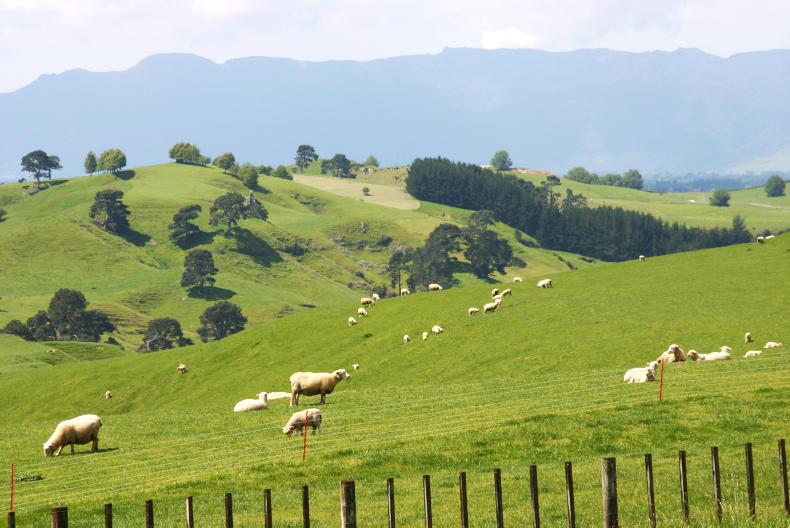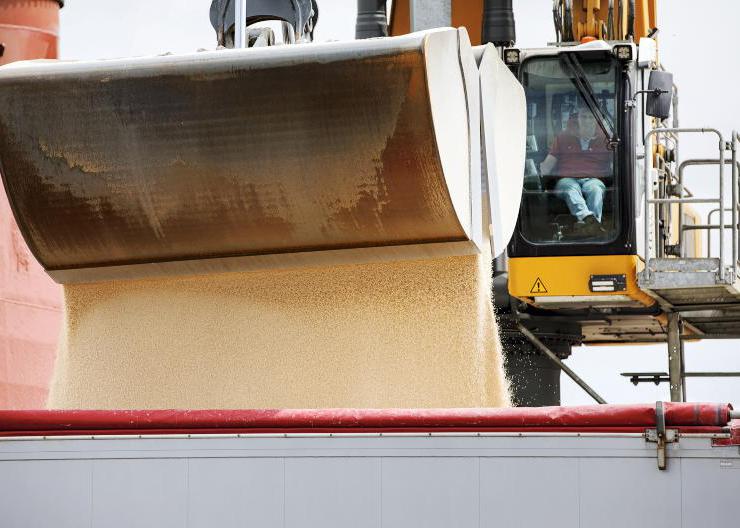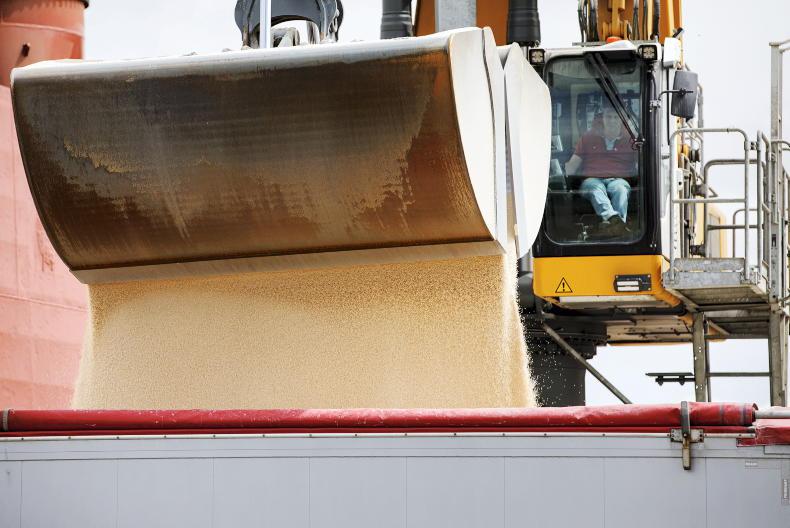It’s a bright summer’s morning in downtown Auckland as busy commuters pour into the city’s central business district. Tall skyscrapers along the city waterfront occupied by banks and financial services firms reflect the warm summer sunshine back out on to the calm bay that fronts Auckland.
But behind the glass exterior of the large New Zealand banks, tension is growing about the underlying health of the country’s land market, and by extension the NZ$40bn (€24bn) of debt currently carried by New Zealand dairy farmers. For context, total lending to Irish farms is less than €3.2bn
Executives at one New Zealand bank estimate that between 30% and 40% of loans that make up the NZ$40bn (€24bn) in dairy farm debt are in distress, with many on interest-only payments and some severe cases where no repayments are being made at all.
This means that anywhere between NZ$12bn and NZ$16bn (€7bn and €10bn) of loans to New Zealand dairy farmers are in distress.
The extent of the concern became clear when New Zealand’s central bank recently highlighted dairy farm debt as a domestic risk to the country’s financial system.
With milk prices in a healthy place for the 2017/18 milking season, New Zealand banks have been putting pressure on farmer customers since September to repay up to NZ$5bn in debt.
However, this move by the banks has had downstream effects that are starting to materialise, most notably in the country’s land market.
Land market
The land market in New Zealand has some important differences from what we have in Europe, the main one being that there is no capital gains tax (CGT) in New Zealand.
This policy has stimulated farmer speculation in land to take advantage of rising asset values.
However, the absence of CGT has also served to attract significant foreign investment into New Zealand, particularly during the boom years when dairy prices were at their most attractive.
This foreign investment has pushed the price of dairy farmland in New Zealand to record levels of NZ$15,500/ac. Foreign investors from China get all the headlines in New Zealand, but the reality is that the majority of outside investment comes from the UK, Germany, Canada, Australia and the US.
This foreign investment in New Zealand has underpinned the country’s farmland market for years. But investors are now walking away from New Zealand dairy for a combination of reasons, including increasing regulatory costs and public perception around environmental issues. However, the main reason foreign investors are shying away from dairy is down to the country’s new government. Following a spectacular election result last October, Jacinda Ardern became New Zealand’s 40th prime minister as the head of a Labour party-led coalition.
The surprise election win for Ardern and the Labour party has rattled market confidence, with the new government proposing a raft of new policies that has spooked investors.
The biggest talking point among farmers during the election campaign was a Labour commitment to bring in a tax on water usage, which would have hit farmers on the south island particularly hard.
While these water charges have been pushed back for now, Labour has established a clean water summit to examine water pollution in the country’s rivers and lakes that is likely to deliver heavy recommendations around water regulations.
The New Zealand government is also set to introduce a new carbon emissions trading scheme, which has been described as “effectively a new tax”. This scheme will generate close to NZ$1bn/year (€590m/year) in charges with over half leveraged from the dairy sector. It is likely this scheme will initially attract a 95% relief for farmers, but this will be phased out over the years.
However, from an investor point of view, the most negative policy proposal of the new government has been its stance on foreign investment. Ardern’s government has made it much more difficult for outsiders to buy a New Zealand company or commercial property like farmland. All outside transactions must go through the Overseas Investments Office, which is now taking over six months to clear transactions.
On top of this, Ardern’s government has also created a new tax working group to look at the country’s current tax base. This working group is almost certain to recommend the introduction a CGT in New Zealand for the first time, thereby eliminating one of the most attractive aspects for buying property in New Zealand.
Correction
When taken as a whole, New Zealand’s land market is in a very precarious position right now and could be on the verge of a serious correction. Bank pressure and distressed loans are forcing farmers to sell farmland at the very moment buyers are losing their appetite.
Foreign investment in dairy farmland is drying up rapidly and moving to new, more attractive sectors such as kiwifruit. In the Bay of Plenty region on New Zealand’s north island where most of the kiwifruit is grown, land is now selling for NZ$1m/ha (€590,000/ha) as this foreign money flows in.
“Dairy farm listings on the market for sale are at a record high at the moment,” according to a senior executive at one of New Zealand’s largest investment banks. “But there are pretty much no buyers right now with outside investment almost totally dried up.”
New Zealand banks are trying to manage the flow of dairy farmland onto the market but supply is building. Unless something rapidly changes, New Zealand’s land market is heading for a crash. Read More
Fonterra woes have been years in the making
More than 20,000 cattle to be culled in New Zealand
It’s a bright summer’s morning in downtown Auckland as busy commuters pour into the city’s central business district. Tall skyscrapers along the city waterfront occupied by banks and financial services firms reflect the warm summer sunshine back out on to the calm bay that fronts Auckland.
But behind the glass exterior of the large New Zealand banks, tension is growing about the underlying health of the country’s land market, and by extension the NZ$40bn (€24bn) of debt currently carried by New Zealand dairy farmers. For context, total lending to Irish farms is less than €3.2bn
Executives at one New Zealand bank estimate that between 30% and 40% of loans that make up the NZ$40bn (€24bn) in dairy farm debt are in distress, with many on interest-only payments and some severe cases where no repayments are being made at all.
This means that anywhere between NZ$12bn and NZ$16bn (€7bn and €10bn) of loans to New Zealand dairy farmers are in distress.
The extent of the concern became clear when New Zealand’s central bank recently highlighted dairy farm debt as a domestic risk to the country’s financial system.
With milk prices in a healthy place for the 2017/18 milking season, New Zealand banks have been putting pressure on farmer customers since September to repay up to NZ$5bn in debt.
However, this move by the banks has had downstream effects that are starting to materialise, most notably in the country’s land market.
Land market
The land market in New Zealand has some important differences from what we have in Europe, the main one being that there is no capital gains tax (CGT) in New Zealand.
This policy has stimulated farmer speculation in land to take advantage of rising asset values.
However, the absence of CGT has also served to attract significant foreign investment into New Zealand, particularly during the boom years when dairy prices were at their most attractive.
This foreign investment has pushed the price of dairy farmland in New Zealand to record levels of NZ$15,500/ac. Foreign investors from China get all the headlines in New Zealand, but the reality is that the majority of outside investment comes from the UK, Germany, Canada, Australia and the US.
This foreign investment in New Zealand has underpinned the country’s farmland market for years. But investors are now walking away from New Zealand dairy for a combination of reasons, including increasing regulatory costs and public perception around environmental issues. However, the main reason foreign investors are shying away from dairy is down to the country’s new government. Following a spectacular election result last October, Jacinda Ardern became New Zealand’s 40th prime minister as the head of a Labour party-led coalition.
The surprise election win for Ardern and the Labour party has rattled market confidence, with the new government proposing a raft of new policies that has spooked investors.
The biggest talking point among farmers during the election campaign was a Labour commitment to bring in a tax on water usage, which would have hit farmers on the south island particularly hard.
While these water charges have been pushed back for now, Labour has established a clean water summit to examine water pollution in the country’s rivers and lakes that is likely to deliver heavy recommendations around water regulations.
The New Zealand government is also set to introduce a new carbon emissions trading scheme, which has been described as “effectively a new tax”. This scheme will generate close to NZ$1bn/year (€590m/year) in charges with over half leveraged from the dairy sector. It is likely this scheme will initially attract a 95% relief for farmers, but this will be phased out over the years.
However, from an investor point of view, the most negative policy proposal of the new government has been its stance on foreign investment. Ardern’s government has made it much more difficult for outsiders to buy a New Zealand company or commercial property like farmland. All outside transactions must go through the Overseas Investments Office, which is now taking over six months to clear transactions.
On top of this, Ardern’s government has also created a new tax working group to look at the country’s current tax base. This working group is almost certain to recommend the introduction a CGT in New Zealand for the first time, thereby eliminating one of the most attractive aspects for buying property in New Zealand.
Correction
When taken as a whole, New Zealand’s land market is in a very precarious position right now and could be on the verge of a serious correction. Bank pressure and distressed loans are forcing farmers to sell farmland at the very moment buyers are losing their appetite.
Foreign investment in dairy farmland is drying up rapidly and moving to new, more attractive sectors such as kiwifruit. In the Bay of Plenty region on New Zealand’s north island where most of the kiwifruit is grown, land is now selling for NZ$1m/ha (€590,000/ha) as this foreign money flows in.
“Dairy farm listings on the market for sale are at a record high at the moment,” according to a senior executive at one of New Zealand’s largest investment banks. “But there are pretty much no buyers right now with outside investment almost totally dried up.”
New Zealand banks are trying to manage the flow of dairy farmland onto the market but supply is building. Unless something rapidly changes, New Zealand’s land market is heading for a crash. Read More
Fonterra woes have been years in the making
More than 20,000 cattle to be culled in New Zealand










SHARING OPTIONS